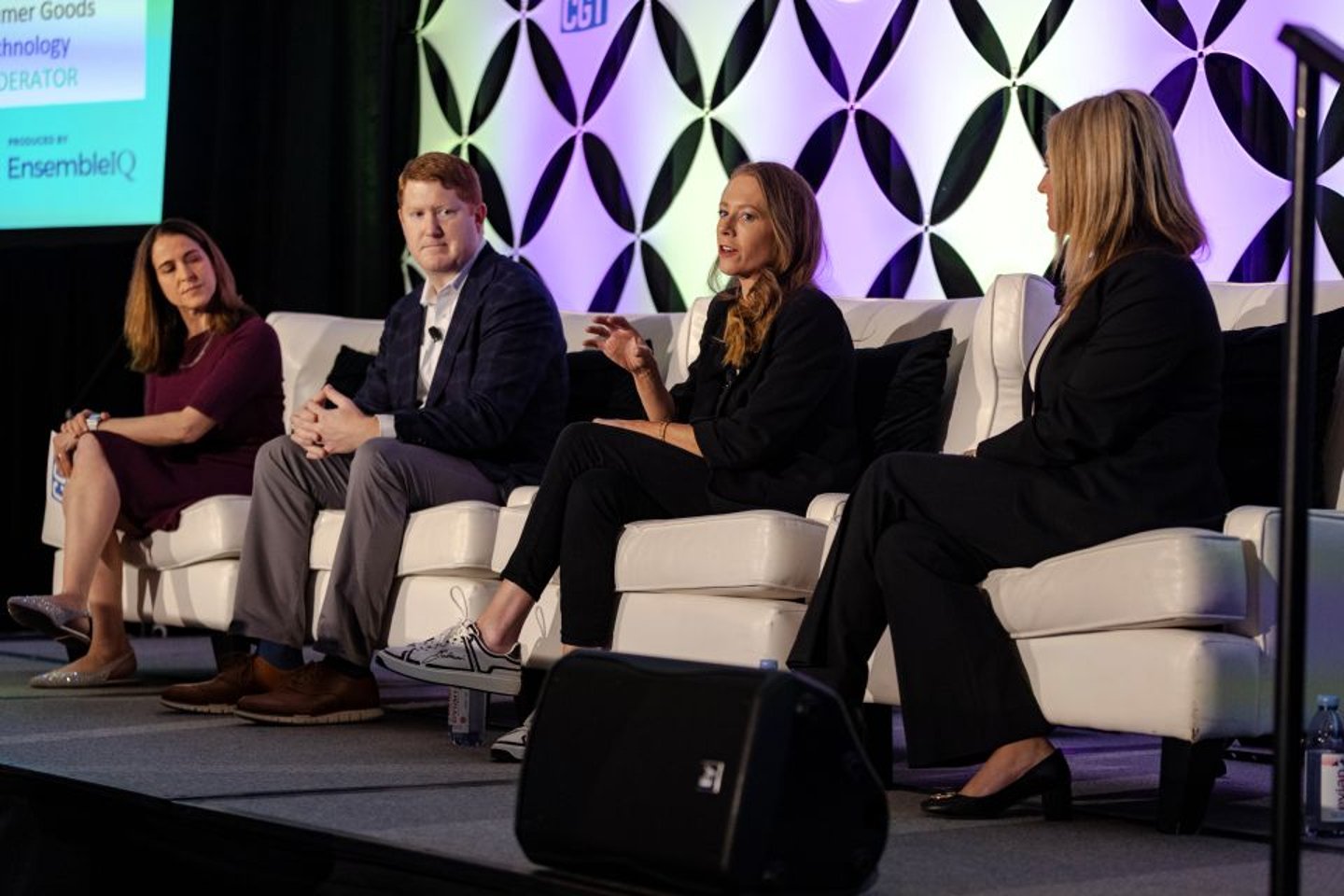Kellanova, Danone, Breakthru Beverage Discuss How to Build Consumer-Centric Operating Models
When consumer expectations shift as quickly as digital trends, operationalizing a consumer-centric strategy is one of the most pressing challenges for global brands.
Michael Boswell, vice president of customer experience at Breakthru Beverage Group, Ariel Dalton, SVP of commercial at Danone North America, and Nicole Vinson, VP of global marketing excellence at Kellanova, recently explored how companies are redesigning legacy structures and creating new operating models to drive growth anchored in consumer experience, agility and connectivity.
Turning Consumer Data Into Commercial Precision
For Boswell, consumer data is the centerpiece of a modern operating model. At Breakthru Beverage, his teams are transforming how products reach the shelf by using consumer data to determine where and how to expand distribution.
"We used to blanket the market with every new product,” Boswell said during the panel discussion at CGT’s Consumer Goods Sales & Marketing Tech Summit, held Oct 28-29. “Now, we use data to identify where the consumer already is, and we are mindful of what they want, where they are, where and how they shop, and making sure their experience is better with the right product at the right place and at the right time.”
This data-driven approach ensures that every sales rep walks into a store knowing which products are underperforming or over-indexing based on local consumer behavior.
Embedding Consumer Insight Across Every Function
Dalton shared how Danone is embedding consumer insight throughout its commercial ecosystem, from product innovation to digital engagement.
“We are putting the consumer at the center of every commercial decision we make, so anything from category strategy to in-store execution. It’s a behavior we expect across all functions,” she said. Using proprietary frameworks, her teams align category, shopper and digital strategies around shared KPIs.The goal is cross-functional visibility that allows every stakeholder to anticipate and meet consumer needs.
Dalton also emphasized that success depends on connectivity.
“When your internal systems are connected and your external partnerships are aligned, the consumer wins,” she said.
Also from CGSM: How Southern Glazer's bridges the BevAlc data gap
Breaking Down Silos to Allow for Agility
For Kellanova’s Vinson, agility starts with dismantling silos. Her team has implemented “full-funnel marketing leads” within each brand and category to ensure end-to-end accountability for consumer engagement.
“We operate like a SWAT team,” Vinson explained. “Cross-functional pods that can rapidly solve problems alongside IT and data analytics partners.”
The company also uses a 70-20-10 budgeting model to preserve “flex dollars” for quick-turn opportunities to support experimentation without jeopardizing core goals.
Balancing Global Scale and Local Needs
A recurring theme across the discussion was the balance between enterprise consistency and local flexibility. Dalton noted that Danone’s local leadership model empowers markets to tailor assortments and messaging, while remaining anchored in a disciplined global structure.
“Local teams must be able to respond to market dynamics, but our shared governance means we maintain brand integrity and quality everywhere,” she said.
Vinson agreed, describing Kellanova’s co-created global marketing transformation as a way to build trust. “Every region has a voice in shaping our standards,” she said. “That collaboration creates alignment, rather than enforcement.”
AI, Automation and the Future of Experience-Led Growth
Looking ahead, the panelists agreed that AI and automation are reshaping how consumer-led organizations operate.
Dalton highlighted Danone’s enterprise-wide partnership with Microsoft to drive AI fluency across 100,000 employees.
“AI literacy must be connected to business strategy,” she said. “It’s not AI for AI’s sake.”
Vinson highlighted AI’s potential in creative analytics, content production and precision marketing — areas that are already yielding measurable results.
Boswell underscored the efficiency gains automation can bring to repetitive tasks, allowing employees to focus on higher-value work.
Building Trust Through Quick Wins
All three agreed that transformation happens one small step at a time.
Vinson emphasized the power of quick wins to build internal credibility and momentum, while Dalton underscored the importance of showing results at the shelf.
Boswell concluded, “When everyone from sales to data science trusts the same consumer signal, that’s when experience-led growth really comes to life.”


